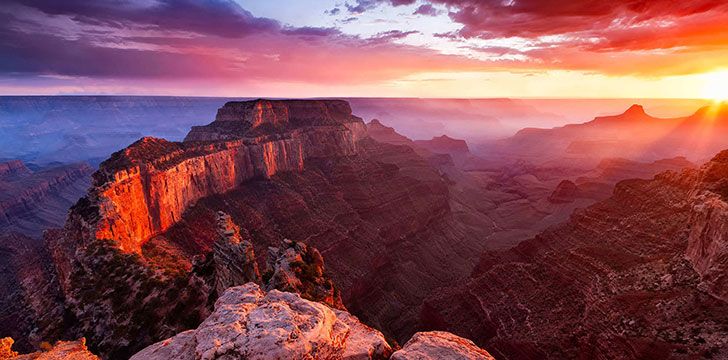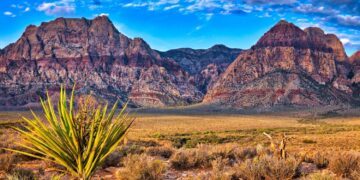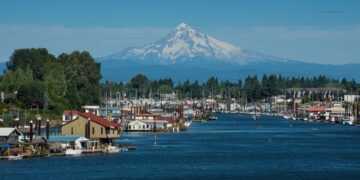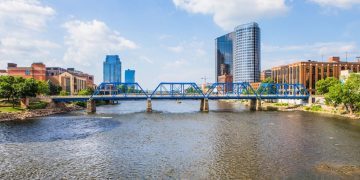The Grand Canyon is one of those places you have to see to believe – but even when you’re there, it doesn’t look real!
It’s no wonder this incredible natural sight is visited by millions of people every year.
Also home to the 6th largest river in the U.S., the Grand Canyon should certainly be on everyone’s bucket list.
With how vast it is, it’s no wonder there’s a lot to learn about this incredible monument!
The Grand Canyon is located in Arizona. It was the 15th national park established in the United States.
It is 277 miles long, its widest point is 18 miles, while its narrowest point is 4 miles.
Even though the Grand Canyon is 6,093 feet deep, the deepest canyon in the world is the Yarlung Tsangpo Grand Canyon in Tibet, which is 17,567 feet deep.
The first expedition down the Grand Canyon was in 1869, led by John Powell. Powell was the first to call it the Grand Canyon.
Every year, about 5.9 million people visit the Grand Canyon. In 1919, there were only 44,170 visitors.
Teddy Roosevelt was a huge supporter of the Grand Canyon. He wanted to keep the area maintained for the future, so he made the area a federal game reserve, and on January 11, 1908, he created a National Monument.
The Grand Canyon officially became a national park in 1919.
Because of how deep it is, there is a drastic difference in weather depending on where you are in the Grand Canyon. The coldest and wettest location is only 8 miles away from the hottest and driest location of the Grand Canyon.
There are only eight native fish species in the Colorado River that runs through the Grand Canyon.
The Grand Canyon is bigger than the state of Rhode Island.
There are hundreds of caves hidden away in the vast expanse of the canyon. Of the 1,000 caves, only about 335 have been recorded, and only one is open to the public.
There is one village in the Grand Canyon. Located at the base of the Havasupai Indian Reservation, this village has a population of 208. It is the most remote community in mainland U.S., and it is inaccessible by roads. It is the only place where mail is delivered by pack mule.
While the North and South Rim is only 10 miles apart, it takes about 5 hours to drive from one side to the other, crossing 215 miles to loop around the canyon.
In 1981, the world record was set for the fastest run from rim to rim by Allyn Cureton. Over 30 years later, that record was finally defeated by just 36 seconds. Jared Scott ran the 20.6 miles in 3 hours, 6 minutes, and 10 seconds.
Even today, erosion from the Colorado River, wind, and rain continues to alter the Canyon.
Living in the Grand Canyon, you’ll find a vast amount of wildlife – 90 mammal species, 250 bird species, 25 reptile species, and 5 amphibian species.
The Grand Canyon is one of the Seven Natural Wonders of the World.
The Canyon and surrounding area have been continuously occupied by Native Americans.
The area in and around the Grand Canyon has some of the cleanest air in the United States.
From the mid-1800s to 2015, there have been about 770 deaths occurred at the Grand Canyon.
Aside from typical sightseeing, you can also go skydiving, rafting, camping, and going on the skywalk – a glass-bottom platform that extends over the canyon.
Depending on where you are in the Canyon, temperatures can range from -10 to 110 Fahrenheit (-23 to 43 Celsius).
If you piled the entire world population inside the Grand Canyon, there wouldn’t be enough people to fill it up.
The rim of the Grand Canyon is 7,000 feet above sea level.
Less than two dozen people have completed a full length-wise hike through the Grand Canyon – that’s fewer people than have been on the moon!
The largest hotel suite in the world is in a cavern of the Grand Canyon. Overall, the Grand Canyon Cavern and Inn is the oldest, deepest, darkest, and quietest motel in the world. One night costs about $700.
The year the original Jaws movie came out, visitors to the Grand Canyon rose by about 40%.
Throughout the Grand Canyon, there are more than 20 layers of rocks.
In 1956, two commercial airplanes flew into the Grand Canyon, showing tourists the sights. Unfortunately, the two planes collided with each other, and everyone was killed. This disaster prompted the founding of the Federal Aviation Agency.
Because of its vast climate, there are over 1,700 different plant species in the Grand Canyon.


















